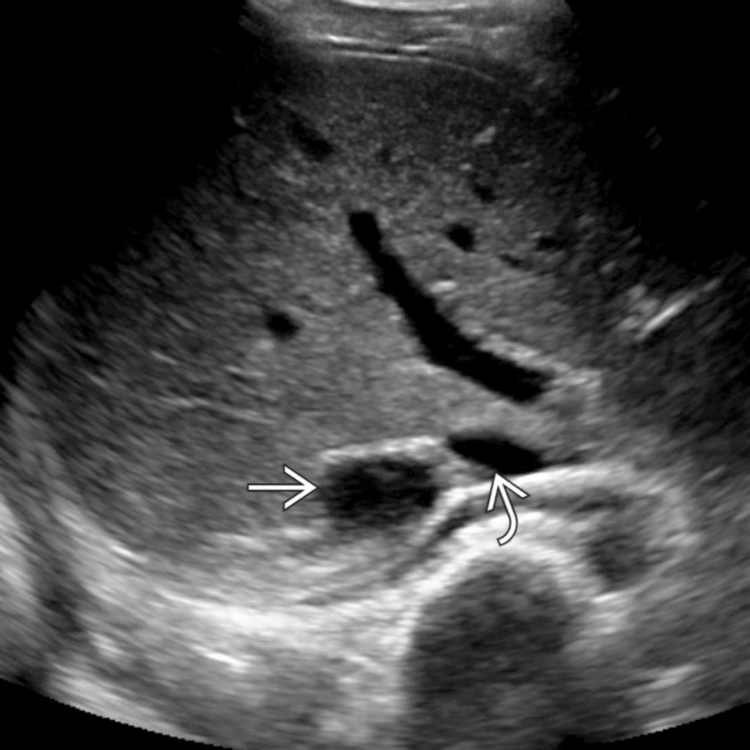KEY FACTS
Terminology
- •
Simple or complex cystic lesion in adrenal gland
Imaging
- •
Well-defined, round, typically unilocular, thin-walled, suprarenal cyst
- •
Anechoic or hypoechoic lesion with thin wall and posterior acoustic enhancement
- ○
Low-level internal echoes, calcification, fluid-fluid levels, and septations suggest recent hemorrhage
- ○
- •
CT: Nonenhancing, thin-walled, homogeneous, low-density lesion with attenuation values < 20 HU
- ○
Higher or mixed attenuation cyst contents → hemorrhage, intracystic debris, crystals; ± calcification
- ○
- •
MR: Nonenhancing with uniform low T1, high T2 SI
- ○
Hemorrhage shows variable T1 signal
- ○
- •
Concerning features: Complicated cyst, ≥ 5 cm, internal echogenicity, or thick wall (≥ 3 mm) → suspect malignancy
- •
Color Doppler shows no internal flow
- •
May be initially detected and characterized by ultrasound; ultrasound can be used for follow-up
- •
Imaging recommendation
- •
CT and MR for further characterization if complex
- •
Complicated cyst, ≥ 5 cm, internal echogenicity or thick wall (≥ 3 mm): ↑ concern for malignancy
Top Differential Diagnoses
- •
Adjacent cystic lesions
- •
Adrenal adenoma
- •
Necrotic adrenal tumor
Pathology
- •
Endothelial lining (~ 45%): Lymphangioma (majority) and hemangioma
- •
Pseudocyst (~ 39%): Prior hemorrhage or infarction
- •
Epithelial lining (~ 9%): True simple cyst
- •
Parasitic cyst (~ 7%): Usually due to disseminated Echinococcus granulosus infection
Clinical Issues
- •
Typically clinically silent
- •
Abdominal or flank pain due to mass effect or cyst rupture
- •
Often increases in size over time; not indicative of malignancy
- •
Usually conservative management: No standard follow-up imaging recommendations
- •
Treatment reserved for cysts with malignant features, > 5 cm, or in symptomatic patients with endocrine abnormalities or complications
- •
Due to posttraumatic cyst rupture
Scanning Tips
- •
Adrenal cysts are avascular; optimize Doppler settings to avoid misdiagnosis
 lateral to the vena cava
lateral to the vena cava  is shown. The cyst is small and unilocular with low-level internal echoes.
is shown. The cyst is small and unilocular with low-level internal echoes.










